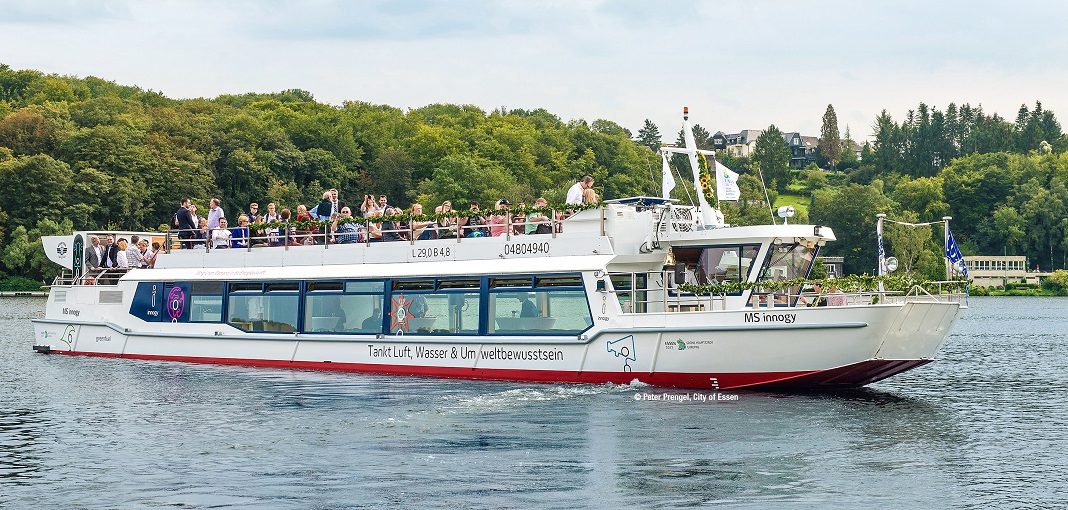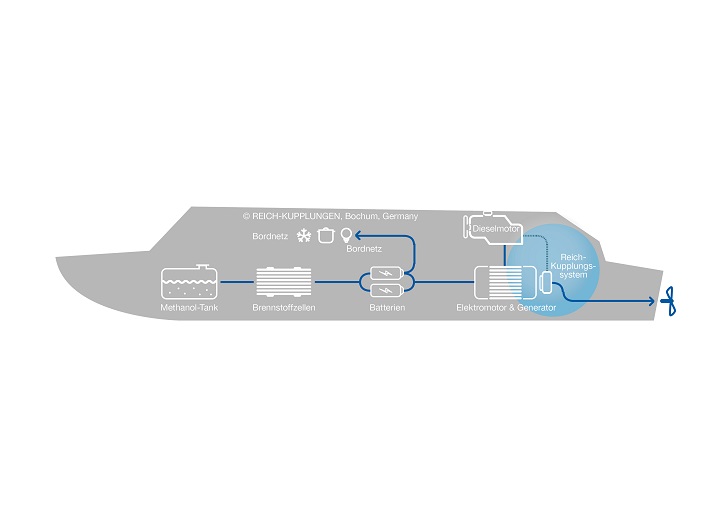

Electric and hybrid drives are developing at a pace within the automotive sector and are becoming a readily accepted method of propulsion for many private and commercial vehicle types. Germany’s first electrically-powered pleasure craft is an example of this.
Whilst the automotive sector has for some time been the focus for the development of eco-friendly power sources, the shipping industry still relies heavily on conventional fuels and generates a significant amount of the carbon dioxide entering the atmosphere.
It is clear that the internal combustion engine will continue to play an important part in the shipping industry for some time to come, however the recent introduction of Germany’s first electrically driven excursion vessel could help to point the way for the development of cleaner power sources for larger ships.
Specially developed At the heart of this innovative craft, and transmitting the power from a total of three drive types, is a specially developed coupling unit from Reich-Kupplungen. With a history spanning more than 70 years, the company has built up expertise in the design and manufacture of drive couplings for use across many industries and applications.
Germany’s first electrically powered pleasure craft has been making the news since the summer of 2017, when it first started to transport passengers on Baldeney Lake in Essen. Its’ quiet and eco-friendly operation are a result of the innovative drive system which is a combination of a methanol tank, fuel cell and motor.
The coupling system for the drive was designed and manufactured by Reich-Kupplungen. The complete coupling unit consists of a Multi Mont Sella 100 claw coupling with a Arcusaflex 5.1 flange coupling and two electromagnetic clutches. The challenges faced by Reich’s engineers included delivering a switchable propulsion drive system which would allow the automated use of the three drive types: purely electric drive, pure diesel drive or combined diesel-electric drive.
To reduce the occurrence of vibrations from the engine, the motor and the drive components, flexible and highly flexible couplings, are combined with the electromagnetic clutches and integrated into a single housing to form a compact unit.
Renewable energy The energy required for operating the craft is generated entirely from renewable energy sources. The ethanol energy source is produced by the hydro-electric power station located at Baldeney Lake dam. Carbon dioxide for the production of the electro-bio-catalytic methanol is filtered from ambient air by means of a container. Using hydro-electric power, the enzymes are stimulated to convert water and carbon dioxide into methanol.
However, the amount of methanol produced in this way each day is not sufficient. Therefore, additional methanol, also manufactured in an eco-friendly manner, is sourced from Iceland. The combined total of 330 litres of methanol, sufficient to supply enough energy for 16 hours, is then used to generate electricity in the 35 kW fuel cell of the vessel to power the crafts’ electrical system and the battery-powered motor.
Two batteries, with a capacity of 50 kW hours each, last for four hours in total. At the end of this period they need to be recharged, either by the fuel cell – or by using an onshore charging cable. In case of an emergency, a separate diesel engine can be used to power the vessel.




